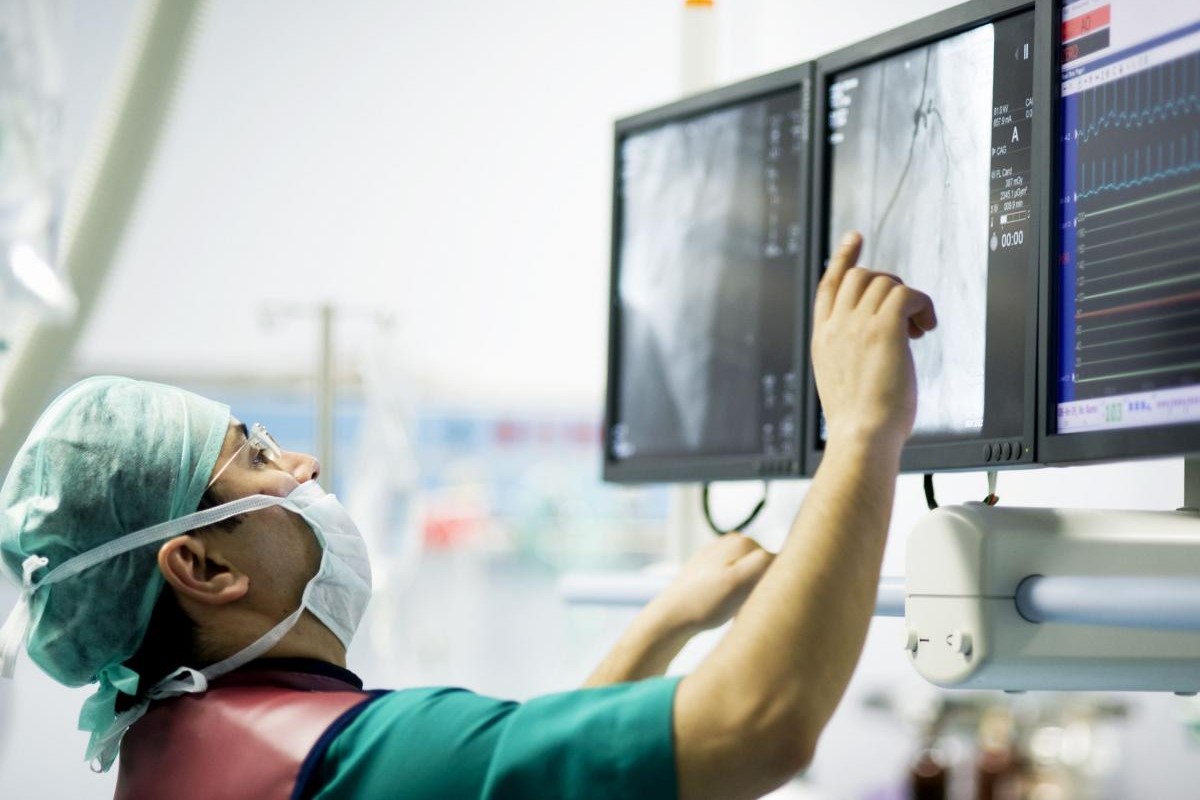
Angioplasty (PTA) of leg arteries: what the surgery consists of
Angioplasty (PTA – Percutaneous Transluminal Angioplasty) of the arteries of the lower limbs is a minimally invasive surgery modality that represents a true innovation in the field of arteriopathy therapy
In many cases, it replaces traditional surgery (by-pass) with the advantage of being minimally invasive, performed under local anaesthesia and with hospitalisation limited to a few days.
Recovery after the procedure is also short and the patient can return to his or her occupations on the day of discharge.
What is PTA leg artery angioplasty?
Also known for its cardiological applications, angioplasty aims to dilate or reopen arteries affected by atherosclerosis through the introduction of a catheter fitted with a balloon that enlarges the diseased spot.
Under local anaesthesia, an artery in the arm or groin is punctured, the stenosis is reached with a catheter and dilated with the balloon.
It can be supplemented by the application of a stent, a metal prosthesis left at the site of the stenosis to reduce the possibility of recurrence.
When to perform leg artery angioplasty
The indications are excellent for the aorto-iliac-femoral and femoral-popliteal districts.
Less indicated for treating distal lesions (tibial arteries).
The success rate is very high (patency of 70-80% at five years).
The risks are related to allergy to the contrast medium and rare haemorrhage or rupture of the artery.
Well tolerated even in patients at high surgical risk, it has made it possible to treat even difficult lesions; however, the best results are obtained for short, segmental lesions.
Carotid, renal and upper limb districts can also be treated with the same method.
The endovascular method also resolves certain cases of aneurysms, especially abdominal ones.
A prerequisite is a good specialist clinical indication and a preliminary study of the arteries with echocolordoppler and eventual angiography, which can be performed at the same time as the angioplasty.
Where surgery is not feasible, it is often necessary, but it can be said that 70% of arterial lesions can be treated with angioplasty.
Read Also:
Emergency Live Even More…Live: Download The New Free App Of Your Newspaper For IOS And Android
Carotid Angioplasty And Stenting: What Are We Talking About?
Coronary Angioplasty, What To Do Post-Operatively?
Heart Patients And Heat: Cardiologist’s Advice For A Safe Summer
US EMS Rescuers To Be Assisted By Paediatricians Through Virtual Reality (VR)
Coronary Angioplasty, How Is The Procedure Performed?


